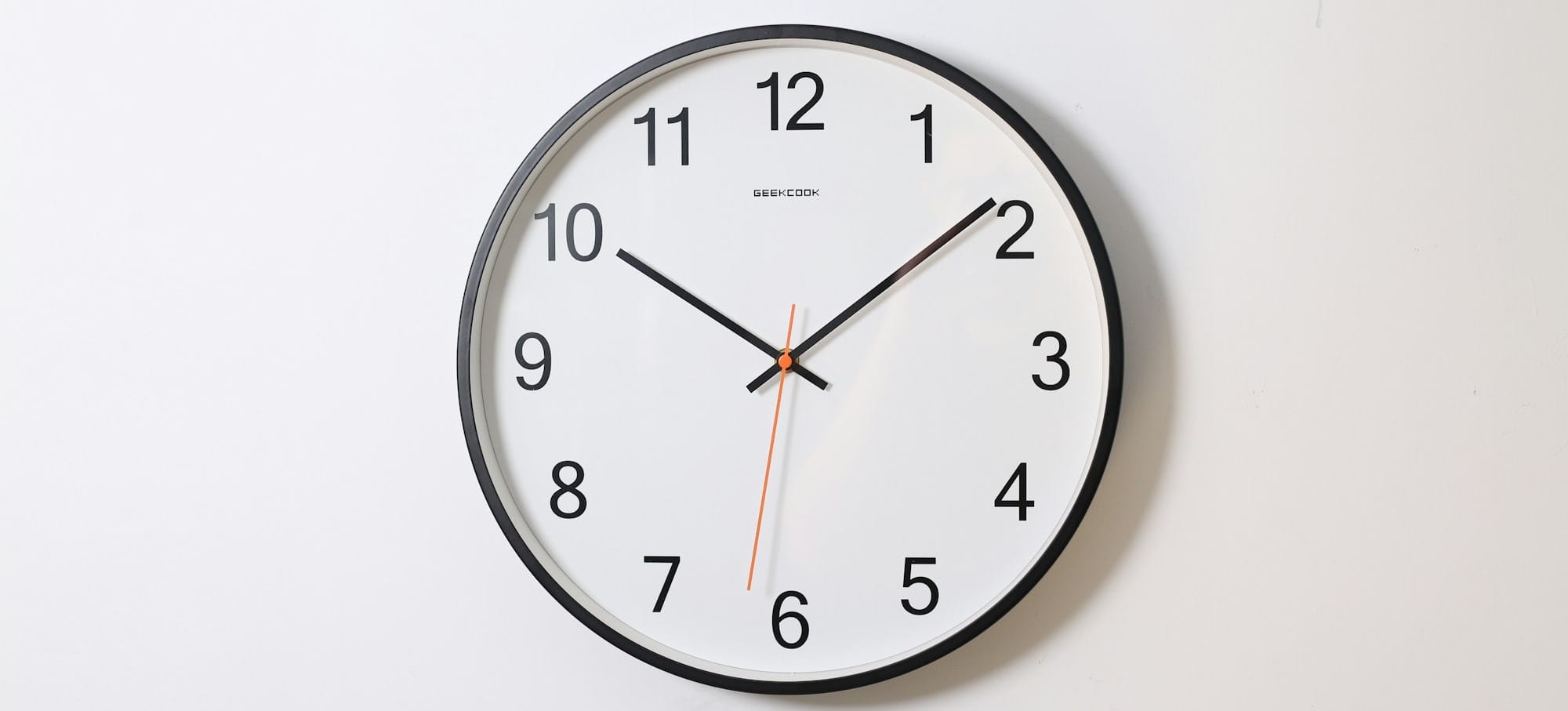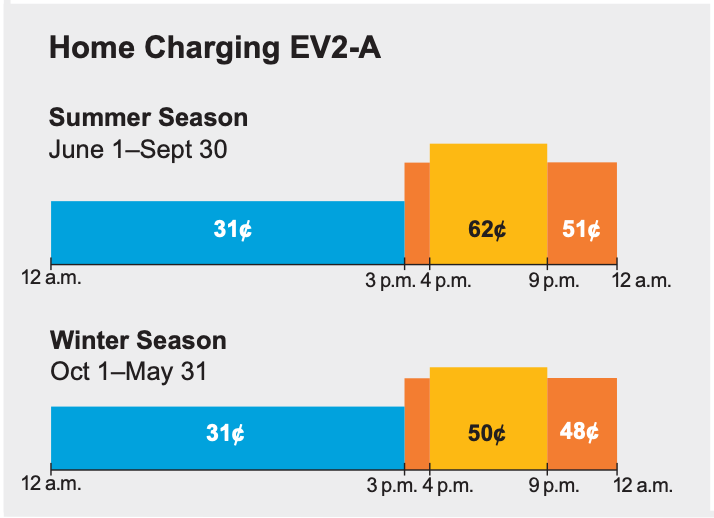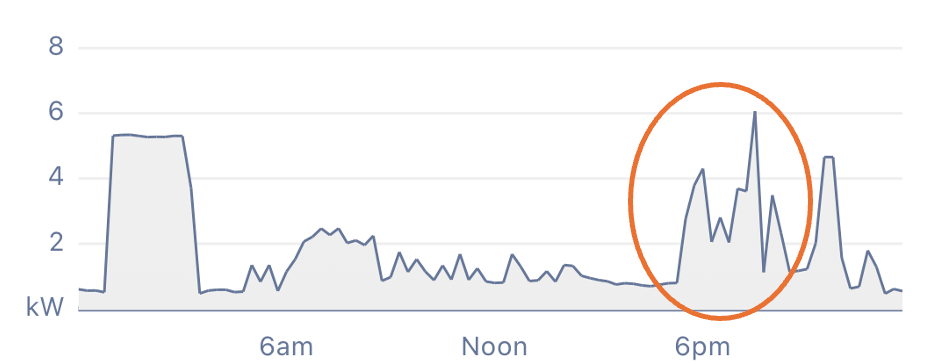Can Time-of-Use Electricity Rates Save You Money?
Maybe only if you use automation or a home battery

Electricity is one of the few products you buy before you know its price. Flip the switch today, see the bill weeks later. So can switching to a different electric rate plan - one that charges different prices depending on the time of day - save you money?
Here are things to consider to help decide whether time-of-use (TOU) alone can help you … and whether automation or a home battery is really needed to realize those savings.
TOU 101 — What It Is & How It Works
Traditional “flat” electricity rates charge the same cents-per-kilowatt-hour day or night. A time-of-use plan, by contrast, divides the 24-hour clock into off-peak (low rates), mid-peak (middle rates), and peak (high rates) windows:
Typical TOU Time and Seasonal Schedule*
| Off-Peak | Mid-Peak | On-Peak | |
|---|---|---|---|
| Summer (Weekdays) | 12mid - 4pm | 9pm - 12-mid | 4pm - 9pm |
| Winter (Weekdays) | 12mid - 3pm | 8pm - 12mid | 3pm - 8pm |
*Your utility’s windows will vary; weekends are sometimes all off-peak.
Here’s a picture showing PG&E’s EV2-A TOU Schedule:

Why some utilities love TOU:
Cost reflection: "Peaker" power plants - those generating power only for a few hot evenings a year - are pricey. High peak prices help pay for them.
Grid stability: Price signals nudge people to shift flexible loads (dishwashers, EV chargers) outside of the peak usage danger zone.
Renewable integration: Mid-day solar gluts make noon power cheap (wholesale rates in Europe are sometimes negative!); TOU rates can encourage users to soak up that sun while discouraging the after-sunset usage spike.
Smart meters enable this - they record usage in 15- or 60-minute chunks, and your bill is simply Σ(kWh × price) across all time buckets.
Can a Household Win on TOU Alone?
Your Load Profile Is Everything
Pull your last 12 months of interval data (most utility portals have it). Graph it. See an evening mountain? That A/C, induction stove, clothes dryer and Netflix binge overlap means you’re exposed to peak rates.

A daytime-heavy profile—work-from-home laptop, washing machine at noon—or EV charging at night, already lines up with cheap hours.
Rate Spread Matters
Using my PG&E territory as an example, the EV2-A TOU plan shown above with 31¢/kWh off-peak versus the 51¢/kWh “Tier 2” rate in a flat-rate plan has a spread of 20¢. Shift 10 kWh from peak to off-peak each weekday and you’ll bank:
10 kWh × 20¢ × 250 weekdays ≈ $500/year
If the spread were only 8¢, savings drop to $200.
Here’s examples of Time-of-Use off-peak rates versus average rates (¢/kWh) from some utilities that offer TOU rates across the country:
| Utility | State | Average Flat Rate | Off-Peak TOU Rate | Savings |
|---|---|---|---|---|
| SDG&E | CA | 54 | 32 | 13 |
| Mass Electric | MA | 37 | 32 | 51 |
| PG&E | CA | 51 | 31 | 20 |
| SCE | CA | 41 | 24 | 8 |
| Conn Light | CT | 32 | 9 | 23 |
| ConEd | NY | 32 | 3 | 29 |
| Ctrl Maine | ME | 27 | 6 | 21 |
| LA DPW | CA | 23 | 8 | 15 |
| Reliant | TX | 16 | 5 | 11 |
Note: “Average Rate” refers either to listed non-TOU residential rate for highest usage tier or 2023 EIA “Average Price” table, depending on entity.
Your Ability to Shift
Shifting 10 kWh a day out of a period of time after 3 or 4pm each day is a lot - so let’s look at the bigger appliances:
- EV chargers: Most EV’s have an app that lets you set the charge times to be strictly off-peak; shifting 30 kWh/night adds up fast - saving $5-6 per day of charging, and you probably won’t notice any difference as long as your car is recharged by the next morning.
- Pool pumps and hot tubs: If you have these, they are big energy users - setting timers to run pumps and heaters during off-peak hours can add up. Changing the pool pump can be simple enough; changing when you want your hot tub to be hot for your use would depend on your individual circumstances.
- Hot Water Heaters: If you have one, electric hot water heaters use a lot of energy, but can also “coast” through the high rates with hot water stored in the tank; a big thermal “battery”. Modeled scenarios showed challenges (ie, running out of hot water or higher heat-loss) and minimal savings using traditional electric water heaters, even with > 30c/kWh rate differences. Newer heat pump water heaters with larger tanks and built-in timers were more effective in using this method.
- Smart thermostats: AC and electric heat or heat pumps are also big energy users - while you can set thermostats to “pre-heat” or “pre-cool” your residence, doing this for more than a couple hours may sacrifice too much comfort.
- Other appliances: Looking at other high-use appliances, shifting use of an electric dryer - which uses between 1.5 to 6 kWh per load - to off-peak times can save ~$1 per load or more. Shifting use of other appliances like dishwashers and clothes washer may save a little, but probably not enough to make a big difference.
Hidden Fees
Some TOU schedules tack on demand charges (the single-highest 15-minute spike each month), fixed monthly charges or minimum bills that claw back small-household gains. Read the fine print.
Use Free Calculators
Utilities like PG&E, SCE, and Duke Energy provide rate-comparison tools that apply each tariff to your actual historical usage—your most reliable forecast.
The Bottom line:
If you can shift at least 20% of your annual consumption - at least 10kWh per day - and your utility offers a generous spread, TOU can shave 10-30% off a typical residential bill.
When TOU Backfires
- Inflexible loads: Medical equipment, life-support devices or HVAC running 24/7 erase your control. Inconvenient scheduling can also erase savings or create conflict between household members who might need to keep specific schedules.
- Renters without appliance autonomy: If the landlord decides when the heat pump or water heater runs, and you don't have an EV or can't charge at home, you might be stuck.
- Narrow discounts: Plans with just a 5¢ spread rarely justify the effort.
Enter the Home Battery — Changing the time-of-use game
A stationary battery (think Tesla Powerwall, LG RESU, Enphase IQ) lets you practice energy arbitrage: buy electricity cheap, store it, then “sell” it back to yourself during peak.
How It Works
- Charger fills the battery overnight at off-peak rates of 31¢/kWh (PG&E EV2-A example).
- Between 4 p.m. and 9 p.m., the battery discharges, powering your home instead of the grid, avoiding the 62 ¢/kWh peak rate.
- Round-trip efficiency is roughly 90%, so the effective cost of that stored kWh is 34.4¢—still far below peak, and lower than flat-rate pricing.
- You don’t need to change your behavior (except for an EV - you should still charge during off-peak) - the battery takes care of the shift.
Sizing & Economics
Capacity: A 10–13 kWh pack covers the evening peak for most households.
Output: 5 kW continuous handles typical air-conditioning or cooking loads, and other incidentals.
Payback math: Suppose you move 10 kWh/day from peak to off-peak and save 28¢ per KWh. That’s $1,022/year. For a $9,000 battery (after a 30 % federal tax credit), payback is about 8–9 years, before any incentive stacking. With about a 10-year life for the battery, you're basically covering the entire cost of the battery with energy savings.
Solar + Battery Synergy with time-of-use
If you already have rooftop solar with no battery, the sun setting or cloudy afternoons force you to pull expensive grid power right when you need it for AC or preparing dinner. A battery extends solar self-consumption past dusk. Under California’s NEM 3.0/NBT, exported excess earns only 5–8 ¢/kWh, so storing it and avoiding a 53 to 62¢/kWh grid purchase is a huge upgrade.
Beyond Bill Savings
We’ve shown how TOU arbitrage or solar + battery can basically pay back your battery investment. You get more benefits:
- Resilience: A battery keeps lights, Wi-Fi, and other devices and appliances running through outages.
- Demand response or Virtual Power Plant (VPP) programs: Some utilities pay you extra to discharge your battery during grid emergencies or peak hours.
- Carbon factor: Shifting from gas-peaking plants (the usual source of peak power) to surplus midday solar reduces your personal CO₂ footprint.
TOU Case Study Hypothetical Example
Family: 3-person suburban California
Annual usage: 10,800 kWh (≈ 30 kWh/day)
Rate: SCE TOU-D-PRIME— 24¢ off-peak, 52-55¢ peak
Battery: 13.5 kWh, 5 kW, installed cost $11,500 → $8,050 after tax credit
During year one, the battery discharged an average 9 kWh each peak evening, saving $980 on energy charges. Net bill fell from $3,700 → $2,700. Simple payback: 8.2 years (assuming zero financing cost). Bonus: a 9-hour outage during a spring storm passed almost unnoticed.
Time-of-use decision checklist:
Is TOU (With or Without Storage) Right for You?
- Do you have access to a TOU tariff? Some cooperatives still lack the metering infrastructure; not all utilities offer TOU. Is the off-peak vs non-TOU pricing a big enough difference?
- Is your current load peak-heavy? Check usage graphs—don’t guess.
- Can you automate flexibility? Simple time-based automations on EV, pool pump and household thermostat settings are easy to schedule; smart plugs cost $10 and can switch off smaller loads.
- Solar owner or planning to be? Batteries amplify ROI under export-unfriendly rules which are becoming more common.
- Local incentives? Many states layer rebates (e.g., California’s SGIP, Vermont’s Bring-Your-Own-Device).
- Risk appetite: Hardware prices fall ~5 % per year; waiting can pay, but so can earlier savings.
If you can tick at least several boxes, the odds point toward savings.
Conclusion — Your Next Step
Time-of-Use rates transform electricity from a flat-rate commodity into a dynamic puzzle. Without storage, savings come from behavioral hacks and appliance scheduling. Add a battery, and you unlock full control—shaving peaks, soaking up solar and using it later, and insulating yourself from outages - you can almost become a day trader for energy (well, in Australia).
My own battery + CA NEM2 solar + PG&E EV2-A rate resulted in a net surplus of energy dollars at the end of my first full year, and we only had to coast through one outage with backup. But, NEM2 is no longer available - has anyone run the battery+TOU calculations without solar? Or with solar on NBT or other states’ rate plans?
- Massachusetts only allows EV charging at the lower TOU rate. ↩︎
